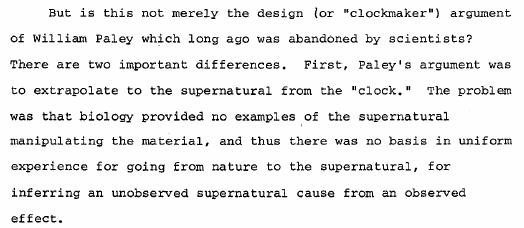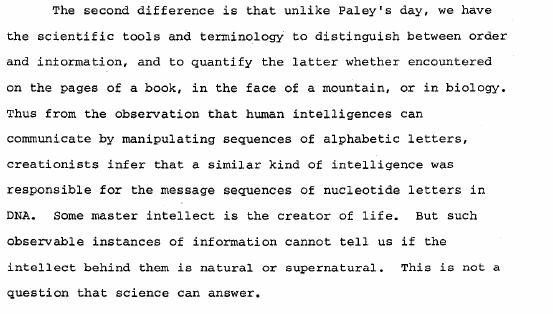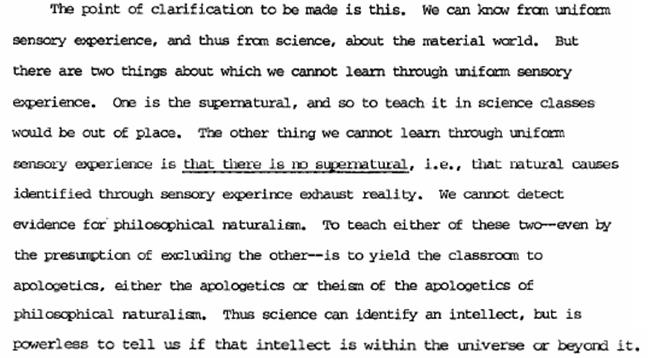 Medicine
Medicine
What’s Up with Ronald Numbers? An Analysis of the Darwinist Metanarrative in the Journal of Clinical Investigation (Part I)
[Editor’s Note: The three individual installments of this series can be seen here: Part 1, Part 2, Part 3. The final complete article, What’s Up with Ronald Numbers? An Analysis of the Darwinist Metanarrative in the Journal of Clinical Investigation, can be found here.]
Ronald Numbers is a widely respected historian of science. He is an exceptional scholar who has garnered the respect of people on all sides of this debate. However, a recent article in the Journal of Clinical Investigation, “Defending science education against intelligent design: a call to action,” co-authored by, among others, Ronald L. Numbers, Elliot Sober [anti-ID philosopher], and Terese Berceau [anti-ID legislator], gives one pause to wonder if Numbers is shifting his role from commentator, to partisan.
In a twist unexpected from the scholarship of Dr. Numbers, the article launches into polemics using invective language:
“After the Edwards ruling [Edwards vs. Aguillard, 1987], they set about removing references to God and creationism from their tracts.” (Defending science education against intelligent design: a call to action, emphasis added)
Such emotive language is not commonly found in scholarly journal articles. A “tract” is “A leaflet or pamphlet containing a declaration or appeal, especially one put out by a religious or political group.” To compare ID literature, such as William Dembski’s Cambridge University Press The Design Inference, or Stephen Meyer’s paper published in Proceedings of the Biological Society of Washington to “tracts,” “leaflets,” or “pamphlets” with purely religious or political language is out of character for an article in a scholarly journal, and out of character for Ronald Numbers.
Is William Dembski’s peer-reviewed, Cambridge University Press-published, academic monograph The Design Inference a mere religious “tract”? What about Stephen Meyer’s peer-reviewed critique of natural selection’s ability to create new genetic information, and his closely reasoned argument in the same essay that intelligent design is the only presently acting cause of information and, therefore, the best explanation for the quantum increase in biological information during the Cambrian explosion, an argument that draws heavily on his extensive training in the history and philosophy of science (Ph.D., Cambridge University), and carefully reviews all of the leading materialistic hypotheses for the Cambrian explosion, including structuralist and self-organizational models? Does labeling these two works “tracts” answer the arguments these two scholars put forward? Will other labels work the same rhetorical magic–“garbage,” “bilge,” “doo doo”? If so, is this why they offered no substantive critique of the central arguments made by Dembski and Meyer? I mean, why bother to engage in close, reasoned debate when a quickie label like “tracts” can make all of your opponent’s pesky arguments disappear.
Apart from using polemics, this article recapitulates the standard Darwinist metanarrative about ID, which goes something like this:
“ID is just an evolved version of creationism where creationists got smart and took out the word “God” to avoid a legal decision, but in reality it’s just an untestable appeal to the supernatural, which says that if evolution cannot explain some things, then therefore it must have been created by miracles from a supernatural or divine being: that claim isn’t testable, and therefore isn’t science, and that’s why ID has never published any peer-reviewed work supporting its ideas. ID is nothing but religion, and cannot contribute anything to science other than stopping otherwise fruitful research. ID proponents should stop trying to push it into the classroom because ID threatens science education, science, and the security of our future.”
But is this metanarrative true, or is it simply another Darwinist creation myth? This response will come in a series of three separate posts that will collectively track how this article makes each claim in the Darwinist metanarrative, and will argue that each claim is false. An elaboration of each inaccuracy will be delivered below, and also in a series of two subsequent posts.
Inaccuracy # 1: The article claims to be inspired by a desire “to address the attempts to undermine science education in Wisconsin.” That made me suspicious because I know of no group in Wisconsin that is trying to undermine evolution education, or, as the metanarrative states, to push ID into the classroom. The authors hold such an opinion, but again, such polemics are unexpected in a scholarly journal article. The article claims:
“In 2004, the school board of Grantsburg, Wisconsin, voted to have ID taught as an alternative scientific theory to evolutionary theory.” (Defending science education against intelligent design: a call to action)
The problem is that this is just flatly wrong. Here’s what Grantsburg’s policy actually says:
“Students are expected to analyze, review, and critique scientific explanations, including hypotheses and theories, as to their strengths and weaknesses using scientific evidence and information. Students shall be able to explain the scientific strengths and weaknesses of evolutionary theory. This policy does not call for the teaching of Creationism or Intelligent Design.”
There is an easy test to determine if Grantsburg’s policy is really teaching ID: observe Darwinist behavior. It took the ACLU less than 2 months to file a lawsuit to have intelligent design banned from Dover, Pennsylvania biology classrooms. If Grantsburg had included ID, we would have immediately seen a lawsuit against the Grantsburg district. But there has been no lawsuit. Why? Because critical analysis policies like this one have nothing to do with ID.
Inaccuracy # 2:The article states that the removal of the phrase “creationism” from the textbook Of Pandas and People implies that ID is just creationism “mutated” over:
“The creationists once again mutated and adapted. After the Edwards ruling, they set about removing references to God and creationism from their tracts. For example, as revealed at the Dover trial (8), the authors of the intelligent design (ID) text Of pandas and people: the central question of biological origins stripped the direct mentions of creationism present in early drafts of the text and systematically substituted the novel term ‘intelligent design'” (Defending science education against intelligent design: a call to action)
Is there more to the story? When certain pre-publication drafts of Pandas used terms such as “creation” and “creationist,” they used them in a way that rejected “creationism” as defined by the courts and popular culture. In Edwards v. Aguillard, the U.S. Supreme Court declared creationism to be a religious viewpoint because it required a “supernatural creator”:
The legislative history therefore reveals that the term “creation science,” as contemplated by the legislature that adopted this Act, embodies the religious belief that a supernatural creator was responsible for the creation of humankind.
Edwards v. Aguillard, 482 U.S. 578, 591-592, emphasis added
Thus, what the Supreme Court found was religion and therefore unconstitutional was not the word “creationism,” but the teaching that a “supernatural creator” was responsible for life. “Creation science” was how the Louisiana Legislature had used to describe that religious concept.
Yet pre-publication drafts of Pandas juxtaposed the word “creation” with statements to the exact opposite effect, noting that science cannot scientifically detect a supernatural creator. Consider these important excerpts from pre-publication drafts of Pandas, showing that from the beginning, their project did not do what made traditional “creationism” unconstitutional: it did not delve into supernatural explanations:



In each of these excerpts from pre-Edwards v. Aguillard drafts of Pandas, it is clear that the idea of “creation” discussed in pre-publication drafts of Pandas was specifically NOT trying to postulate a supernatural creator! The concepts advanced by even pre-publication, pre-Edwards drafts of Pandas were sharply different from what the courts have defined as “creationism.” These early drafts were not trying to study the supernatural.
To solidify this point, consider the deposition testimony of Charles Thaxton as to why he started to use the term intelligent design in the Pandas book:
I wasn’t comfortable with the typical vocabulary that for the most part creationists were using because it didn’t express what I was trying to do. They were wanting to bring God into the discussion, and I was wanting to stay within the empirical domain and do what you can do legitimately there.
Deposition of Charles Thaxton 52-53, Kitzmiller, No. 4:04-CV-2688 (M.D. Pa., July 19, 2005)
Similarly, a 1990 post-publication rebuttal to a critic, written by the Pandas publisher explains:
As a consequence, yes, we are careful not to identify the intelligent cause behind the biological phenomena presented, but not for purposes of stealth, but rather precisely because we think that this is a religious conclusion.
Thus, the limits of what intelligent design can tell us stem not from legal strategies but from an honest effort to limit statements to scientific claims that can be made based upon the empirical data. ID is about respecting the limits of the scientific data — not hiding religion for legal purposes. In other words, even in its pre-publication form Pandas offered a theory that was conceptually distinct from what the courts have defined as “creationism.”
The authors of the article are wrong to say that ID “mutated” to avoid a court decision. ID was formulated in its present form — an empirically based argument that would not stray into the supernatural — before the Edwards case was decided. Thus, even before Edwards v. Aguillard, ID lacked the very quality that caused creationism to be declared unconstitutional: it did not postulate a “supernatural creator.” [sentence deleted soon after posting for clarity — please see this post for a full discussion of the similar definitions issue]
